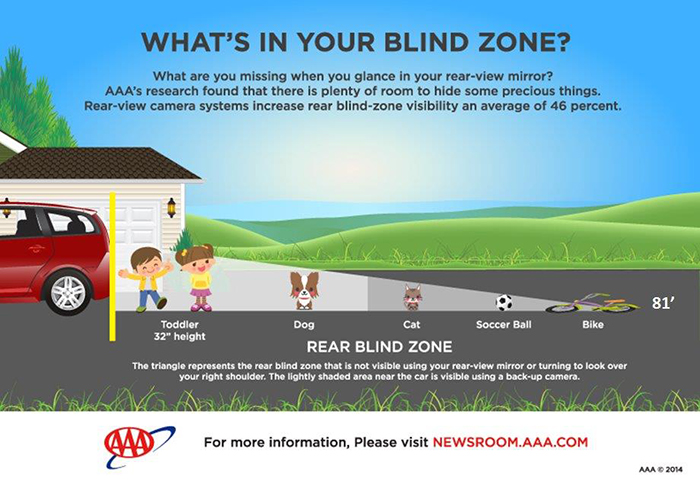Get the Picture? Check Rear View Before Moving Your Vehicle
The National Highway Traffic Safety Administration estimates that there are 210 fatalities and 15,000 injuries annually due to back-over crashes. Perhaps more alarming is that 31 percent of those fatalities are children under 5 years of age. These sad statistics led NHTSA to pass legislation requiring all new passenger cars and light trucks to be equipped with back-up cameras by 2016, with full compliance by 2018.

To understand the benefits of these devices, AAA tested 17 vehicles across 11 manufacturers with factory-installed and aftermarket rear-view camera systems to measure the change in rear visibility versus looking in your mirror. The study showed that:
- A rear-view camera increased visibility of the rear blind zone by an average of 46 percent for the vehicles tested. This ranged from a 36 percent improvement in smaller sedans to a 75 percent improvement in hatchbacks.
- Although these systems dramatically improve rear-view visibility, they don’t show 100 percent of the space behind the vehicle. AAA recommends drivers always walk behind their vehicle to visually confirm that there are no obstacles, and use the rear-view camera to check that nothing has entered the area since the driver’s walk-through inspection.
- Rain, snow or slush can cloud the camera lens, delivering blurry imagery. Walking around the vehicle – and gently wiping the camera – can help motorists confirm that the rear blind zone is clear.
Cameras don’t replace the need to walk around your vehicle before backing up, but they do deliver a clear view directly behind the vehicle where small children are most difficult to see.




